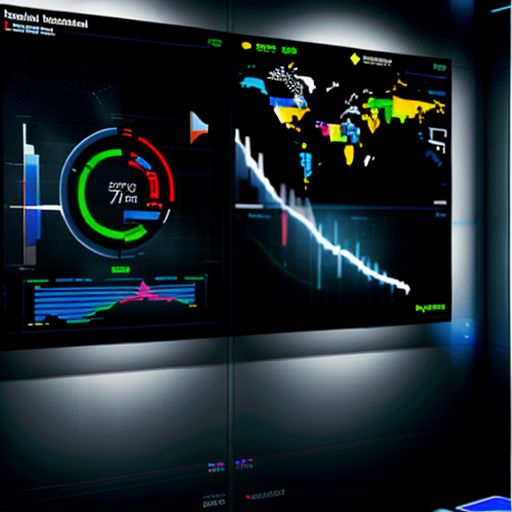In today’s digital landscape, where cyber threats constantly evolve and grow in sophistication, protecting sensitive data and critical systems is paramount for organizations of all sizes. Amidst this ever-present cybersecurity challenge, Security Information and Event Management (SIEM) systems have emerged as indispensable tools for organizations seeking to fortify their defenses and maintain a proactive security posture.
But what exactly is a SIEM system, and how can it benefit your organization? In this comprehensive guide, we’ll delve deep into the world of SIEM, exploring its intricacies, benefits, and how it empowers you to stay ahead of the cybersecurity curve.
Demystifying SIEM: A Deep Dive
What is a Security Information and Event Management (SIEM) System?
Imagine a central command center for your organization’s cybersecurity, where real-time insights into potential threats and vulnerabilities are readily available. That’s the essence of a SIEM system.
A SIEM system is a powerful cybersecurity solution that provides a centralized platform for collecting, analyzing, and managing security data from various sources across your entire IT infrastructure. It acts as a vigilant watchdog, constantly monitoring network traffic, system logs, and security alerts for suspicious activities. By correlating and analyzing this data, SIEM systems can detect, identify, and prioritize real threats, enabling your security team to respond swiftly and effectively.
The Key Components of a SIEM System
A typical SIEM system comprises several key components, each playing a crucial role in its overall functionality:
- Data Aggregation: SIEM systems collect vast amounts of security data from various sources, including firewalls, intrusion detection systems (IDS), antivirus software, servers, databases, and more. This data is then normalized into a common format for analysis.
- Correlation Engine: This is the heart of a SIEM system. It analyzes the collected data, identifying patterns, anomalies, and correlations that may indicate a security incident. By connecting the dots between seemingly disparate events, the correlation engine helps uncover hidden threats that might otherwise go unnoticed.
- Alerting and Reporting: When the SIEM system detects a potential threat, it generates alerts, notifying the security team in real-time. It also provides comprehensive reports, dashboards, and visualizations, offering insights into security trends, vulnerabilities, and the effectiveness of security measures.
security.thegioinguhanh.com/wp-content/uploads/2024/07/network-security-dashboard-66939a.jpg" alt="Network Security Dashboard" width="512" height="512">Network Security Dashboard
The Importance of SIEM in Today’s Threat Landscape
In an era marked by increasingly sophisticated cyberattacks, traditional security solutions often fall short. SIEM systems address this gap by providing a comprehensive and proactive approach to cybersecurity:
- Enhanced Threat Detection and Response: By correlating data from multiple sources, SIEM systems can detect complex attacks that traditional security solutions might miss. This early detection enables faster response times, minimizing potential damage.
- Improved Security Posture: SIEM systems provide valuable insights into your organization’s security posture, highlighting vulnerabilities and areas for improvement.
- Compliance Requirements: Many industries have strict regulatory requirements regarding data security and privacy. SIEM systems help organizations meet these compliance obligations by providing audit trails, log management, and reporting capabilities.
Key Features and Benefits of SIEM Systems
Real-time Visibility and Threat Detection
SIEM solutions provide real-time visibility into your IT environment, enabling you to identify and respond to security threats as they happen. By analyzing security data from across your organization, SIEMs can detect suspicious patterns and anomalies that indicate a potential attack, allowing your security team to take immediate action to mitigate the threat.
Centralized Security Management
One of the key benefits of SIEM is its ability to centralize security management. Instead of relying on multiple point solutions that generate isolated alerts, a SIEM system aggregates all security data into a single platform, providing a unified view of your security posture. This centralized approach streamlines security operations, improves efficiency, and reduces response times.
Compliance Reporting and Auditing
SIEM systems play a crucial role in meeting regulatory compliance requirements. They provide detailed audit logs, security event correlation, and reporting capabilities that help organizations meet the stringent demands of industry regulations such as HIPAA, PCI DSS, and GDPR. With a SIEM in place, you can demonstrate compliance, generate audit reports, and streamline compliance audits.
Choosing the Right SIEM Solution for Your Business
Selecting the appropriate SIEM solution for your organization is paramount. Consider these factors when making your decision:
- Deployment Options: SIEM solutions are available as on-premises, cloud-based, or hybrid deployments. Choose the option that aligns best with your infrastructure, budget, and IT expertise.
- Scalability and Flexibility: Ensure the SIEM solution can scale to accommodate your organization’s growth and evolving security needs.
- Integration Capabilities: A robust SIEM system should seamlessly integrate with your existing security tools and infrastructure, including firewalls, intrusion detection systems, and endpoint security solutions.
Conclusion
In conclusion, a Security Information and Event Management (SIEM) system is no longer a luxury but a necessity for organizations of all sizes looking to bolster their cybersecurity posture in today’s dynamic threat landscape. By providing real-time visibility, centralized security management, and compliance reporting capabilities, SIEM empowers organizations to stay ahead of cyber threats and safeguard their valuable assets.
If you’re ready to strengthen your organization’s security defenses and gain a comprehensive view of your security posture, exploring and implementing a SIEM solution should be a top priority.
We encourage you to share your thoughts, experiences, or questions about SIEM in the comments section below. Let’s continue the conversation and work together to create a safer digital environment!
